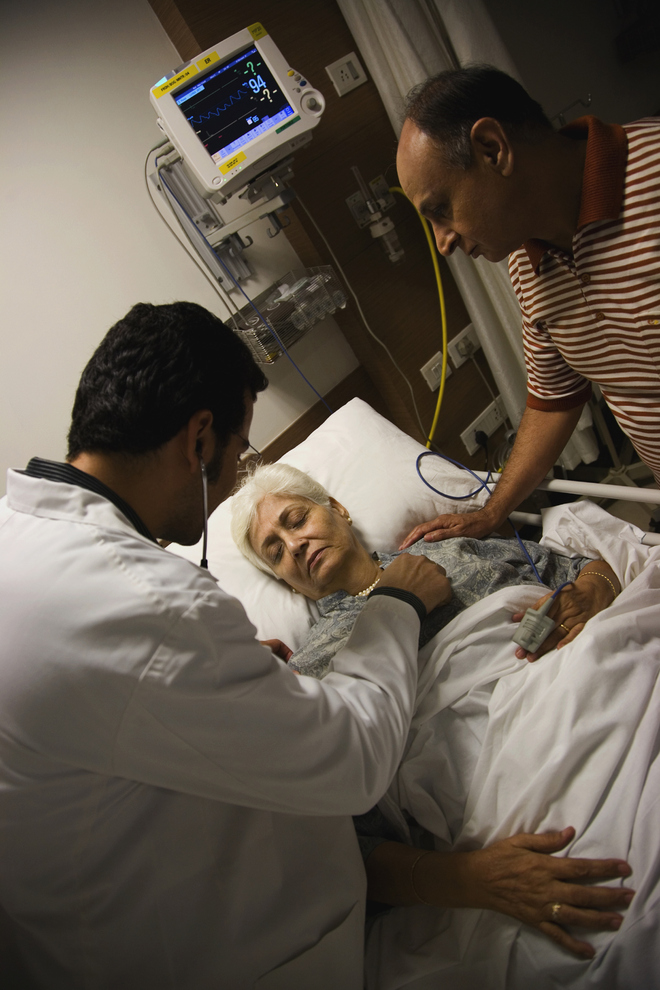
Vibha Sharma
We are living in the times when forties are the new twenties and sixties the new forties. But no matter how much we defy our age, the body clock keeps ticking.
Medical science claims to have increased the average age of human beings and the advancements have led us to believe that miracles would work. But death is inevitable. It’s true that one can and must not lead life thinking about death but some preparation is surely required, as an individual, as a family, as a society for the end time. An understanding needs set in that there is a very fine line between trying to increase quality/quantity of life vs letting the nature take charge.
When one starts thinking thus, many questions cloud the mind — what is the right time to let go, when should medical intervention back off and let the person exit gracefully and peacefully; what percentage of quality of life can be compromised for the quantity or vice versa; where should one go when a patient is beyond any medicine or doctor; where is the support for the patient and the family and many more. There is a high probability that each one of us will have to confront these questions in one’s lifetime either for oneself or for a loved one.
While a family needs to brainstorm how to manage this period for one of the loved ones, it is equally important how a society equips itself as its members enter the phase of final exit.
In earlier days most of the family elders rarely had to spend their last days in hospitals, among strange faces, tethered to numerous tubes, monitors, masks, bags and what not? Perhaps just a few, under rare circumstances, otherwise most died peacefully either in sleep or on floor looking at the wick of the lamp lit to guide the soul to the world beyond.
But gone are the days when people breathed their last surrounded by their loved ones, immersed in their daily routines, satisfied with life well spent and prepared to move on.
While one cannot underestimate the boons of medical science in a human’s life, the flip side of it cannot be ignored altogether. Thanks to research and advancements, we are able to witness a polio-free world, reduced rates of child mortality, lesser complications at child birth, cures of diseases which were earlier fatal — to just name a few. However, we cannot completely overlook the fact that medicine has made dying really complicated and difficult.
As Atul Gawande, a US-based surgeon says, “Doctors are trained to keep their patients alive as long as possible. But they are never taught how to prepare people to die. And yet for many patients, particularly the old and terminally ill, death is a question of when, and not it.”
For instance, a geriatric person who is diagnosed with metastatic cancer of third stage, practically, would not be able to endure the harsh cancer treatment. But it is natural for the family to think of getting the best treatment for their loved one. So the best hospital and best oncologist are approached, the patient is made to undergo battery of tests, each of which brings shocking news as they realise that the disease has claimed much more than what they had thought. The family is asked to take a decision - treatment course or palliative care. This decision in itself is such a difficult one.
Even if the family picks the route of palliative care for the patient, where can one take the patient — at home, but medically untrained families are in no position to take care of the complications. A trained nurse is hired but even then the situation tends to go out of control. Again the same question, where does one take the patient? To the Intensive Care Unit of some hospital which is equipped to clinically deal with patient’s physical complications but the patient loses touch with everything that could impart him/her the feeling of being alive.
It ends up becoming a lose-lose situation for all, for the confined-to-bed patient for obvious reasons and for the family who gets to meet the patient for just some glimpses every day. The exorbitant ICU costs drain the financial reserves to no end.
Developed countries have accepted the fact that there is a need for something in between a home and a hospital and serious efforts are underway to make such facilities as similar to home as possible. We are a developing country but the citizens are humans nonetheless. Concept like hospice care originated in West and now it has its presence in India but much remains desired on various fronts ranging from funds to facilities. The main objective of hospice care is to offer end-of-life care which is provided by a team of health-care professionals and volunteers. They give medical, psychological and spiritual support. The goal of the care is to provide people who are dying have peace, comfort and dignity.
When we think so much about bringing more comforts in our daily lives, we must think of this basic necessity of every human as well. High time we have such setups — as a joint venture of state and society, in every city.



























